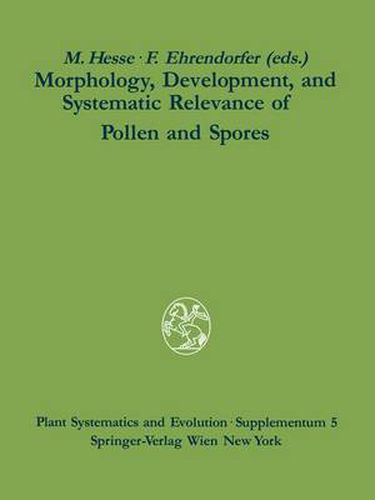Readings Newsletter
Become a Readings Member to make your shopping experience even easier.
Sign in or sign up for free!
You’re not far away from qualifying for FREE standard shipping within Australia
You’ve qualified for FREE standard shipping within Australia
The cart is loading…






This title is printed to order. This book may have been self-published. If so, we cannot guarantee the quality of the content. In the main most books will have gone through the editing process however some may not. We therefore suggest that you be aware of this before ordering this book. If in doubt check either the author or publisher’s details as we are unable to accept any returns unless they are faulty. Please contact us if you have any questions.
Palynology, the science of fossil and recent spores/pollen grains, is of high importance, both in many pure and applied fields of the natural sciences (e.g. in botany, geology, climatology, archeology and medicine). It is not only an auxiliary science, but can certainly stand for itself. The classical palynology subjects, pollen morphology and systematics, are at present influenced by many modern approaches, e.g. from cell biology, analytical electron microscopy, morphometry, up to com- puter-aided-design of threedimensional reconstruction. In recent years fascinating informations have come to light, and new insights have given rise to changing scientific concepts. During the XIV International Botanical Congress, held in Berlin in 1987, a symposium was devoted to important topics of (actuo)palynology. Nine of its innovative, major contributions are presented in this volume. They cover the comparative morphology and the systematic/evolutionary significance of pollen/spores in critical taxa, aspects of pollen development (cytoskeleton), the substructure of sporopollenin, homologies between wall strata of ferns, gymnosperms and angiosperms, and important (but so far underrated) physical aspects of harmomegathy and pollen transport (fluid versus solid mechanics).
$9.00 standard shipping within Australia
FREE standard shipping within Australia for orders over $100.00
Express & International shipping calculated at checkout
This title is printed to order. This book may have been self-published. If so, we cannot guarantee the quality of the content. In the main most books will have gone through the editing process however some may not. We therefore suggest that you be aware of this before ordering this book. If in doubt check either the author or publisher’s details as we are unable to accept any returns unless they are faulty. Please contact us if you have any questions.
Palynology, the science of fossil and recent spores/pollen grains, is of high importance, both in many pure and applied fields of the natural sciences (e.g. in botany, geology, climatology, archeology and medicine). It is not only an auxiliary science, but can certainly stand for itself. The classical palynology subjects, pollen morphology and systematics, are at present influenced by many modern approaches, e.g. from cell biology, analytical electron microscopy, morphometry, up to com- puter-aided-design of threedimensional reconstruction. In recent years fascinating informations have come to light, and new insights have given rise to changing scientific concepts. During the XIV International Botanical Congress, held in Berlin in 1987, a symposium was devoted to important topics of (actuo)palynology. Nine of its innovative, major contributions are presented in this volume. They cover the comparative morphology and the systematic/evolutionary significance of pollen/spores in critical taxa, aspects of pollen development (cytoskeleton), the substructure of sporopollenin, homologies between wall strata of ferns, gymnosperms and angiosperms, and important (but so far underrated) physical aspects of harmomegathy and pollen transport (fluid versus solid mechanics).